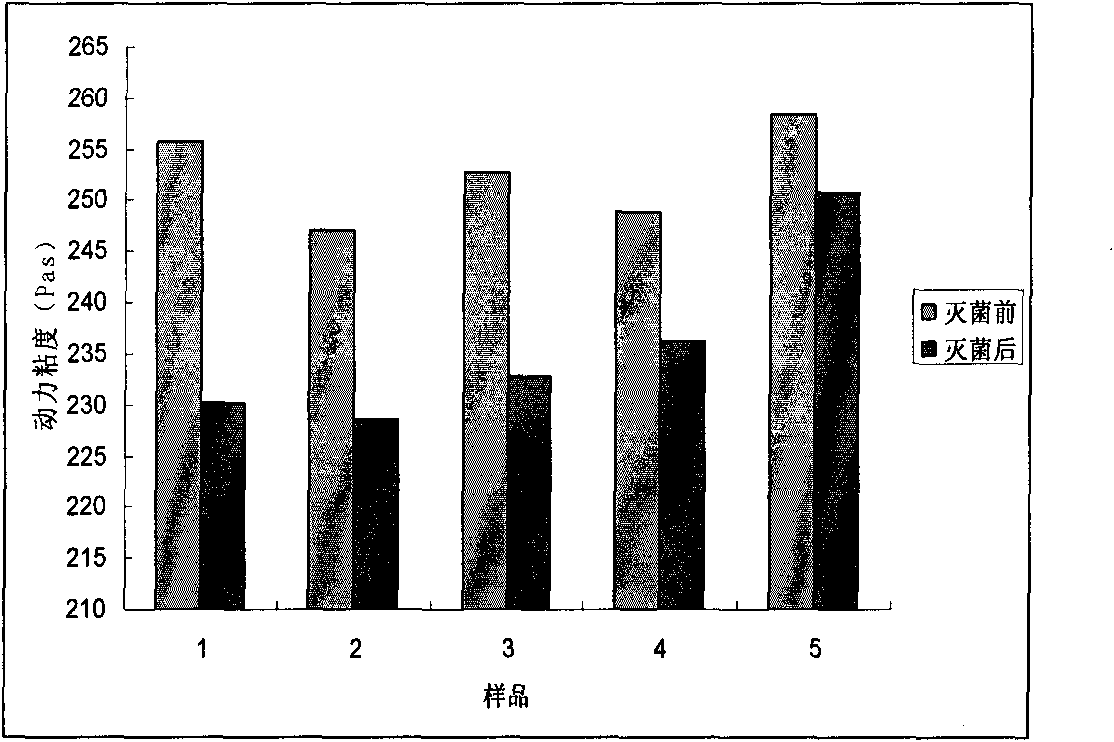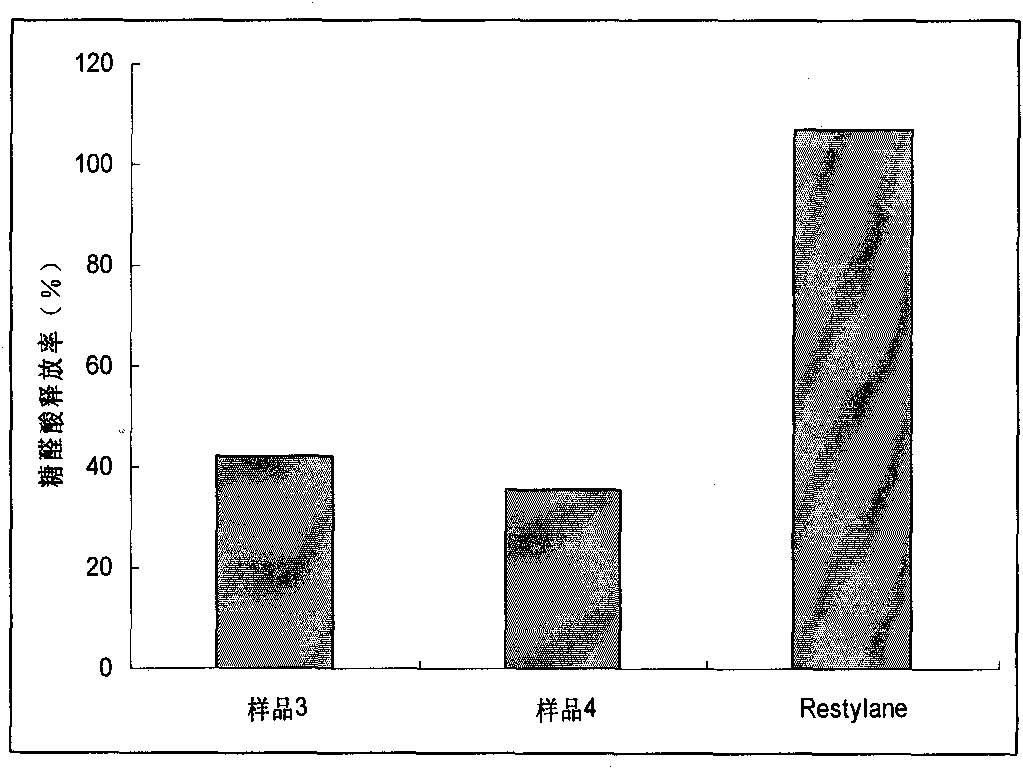Preparation method for agranular crosslinking sodium hyaluronate with high-temperature-resistant and enzymatic-hydrolysis-resistant characteristics
A technology of cross-linking hyaluronic acid and sodium hyaluronate, which is applied in the field of medical biomaterials, can solve the problems of being unable to get rid of it, and achieve the effect of improving injectability and facilitating clinical use
- Summary
- Abstract
- Description
- Claims
- Application Information
AI Technical Summary
Problems solved by technology
Method used
Image
Examples
Embodiment 1
[0015] Dissolve 1g of hyaluronic acid dry powder in 50ml of 2% sodium hydroxide solution. After completely dissolving, add 150 microliters of cross-linking agent divinyl sulfone, heat in a water bath at 40°C, and react for 3 hours; after the reaction, slowly add 95% of ethanol solution until a white precipitate is precipitated, the white precipitate is washed 3 to 4 times with the same concentration of ethanol solution, and then filtered to obtain white particles; the white particles are dissolved in 50ml of PBS solution, dialyzed to obtain a cross-linked hyaluronic acid gel.
Embodiment 2
[0017] Dissolve 1g of hyaluronic acid dry powder in 50ml of 2% sodium hydroxide solution. After completely dissolving, add 180 microliters of cross-linking agent divinyl sulfone, heat in a water bath at 45°C, and react for 3 hours; after the reaction, slowly add 95% ethanol solution until a white precipitate is precipitated, the white precipitate is washed 3 to 4 times with the same concentration of ethanol solution, and then filtered to obtain white particles; the white particles are dissolved in 50ml of PBS solution, dialyzed to obtain cross-linked hyaluronic acid gel .
Embodiment 3
[0019] Dissolve 1g of hyaluronic acid dry powder in 50ml of 2% sodium hydroxide solution. After completely dissolving, add 200 microliters of cross-linking agent divinyl sulfone, heat in a water bath at 50°C, and react for 2 hours; after the reaction, slowly add 95% ethanol solution until a white precipitate is precipitated, the white precipitate is washed 3 to 4 times with the same concentration of ethanol solution, and then filtered to obtain white particles; the white particles are dissolved in 50ml of PBS solution, dialyzed to obtain cross-linked hyaluronic acid gel .
PUM
 Login to View More
Login to View More Abstract
Description
Claims
Application Information
 Login to View More
Login to View More - R&D
- Intellectual Property
- Life Sciences
- Materials
- Tech Scout
- Unparalleled Data Quality
- Higher Quality Content
- 60% Fewer Hallucinations
Browse by: Latest US Patents, China's latest patents, Technical Efficacy Thesaurus, Application Domain, Technology Topic, Popular Technical Reports.
© 2025 PatSnap. All rights reserved.Legal|Privacy policy|Modern Slavery Act Transparency Statement|Sitemap|About US| Contact US: help@patsnap.com



